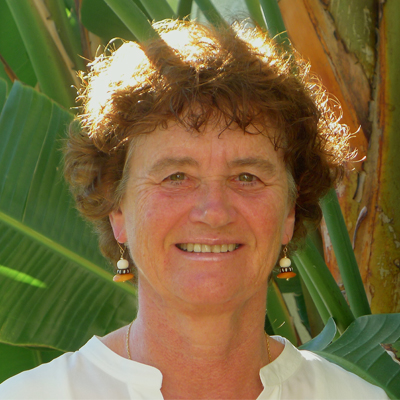Understanding how the brain processes and interprets language (and non-language materials)
Language is the medium of social interaction and cultural transmission of knowledge. We all use language routinely for multiple purposes – to communicate, learn, and persuade, some more effectively than others, but we still have much to discover about how our two half-brains use what we know to construct interpretations from words that often have many possible meanings or senses so quickly and effortlessly. Understanding how human brains flexibly and successfully adjust to variations in rate, meaning, and voices in dynamically changing contexts will have untold benefits for normal and abnormal language users in all walks of life. Dr. Marta Kutas, Distinguished Professor and Chair of Cognitive Science of University of California, San Diego, thus studies the “normal” pattern of electrical brain activity sensitivities to assess possible “abnormal” patterns (e.g., in children, SLI, schizophrenia, brain damage), and to learn what assessments or interventions may best test and benefit developing and/or compromised brains.
Electrical activity is the currency of how neurons communicate and transfer information. Recording electrical brain activity -- or brainwaves at the scalp -- is as close as we can get to seeing this mind-brain activity in action without cutting people open. These brainwaves are an exquisitely sensitive index of activity in the human perceptual, motor, cognitive, and emotional systems -- healthy and compromised alike, across the lifespan. Thus, for more than two decades, Dr. Kutas and her team have analyzed brainwaves from people, young and old, healthy and with brain damage as they make sense of written and spoken language, pictures and comics to learn more about how the two seemingly similar but different halves of the brain together combine past experiences with meaningful inputs to construct the world we perceive, recognize, remember and interact with. Many factors impact how quickly and accurately we make sense of the written language and images we see and the spoken language we hear. Dr. Kutas and her lab have studied how incoming language taps into the different brain systems that influence what is understood right then and, in turn, further shape what is known about categories, associations, objects, actions, and events. They are also studying how the immediate context -- the inner and outer world of the comprehender -- influences what people understand. By examining different functions and mechanisms of the brain, Dr. Kutas hopes to understand the role of prediction and the cost of mispredicting, and ultimately how meaning is organized, accessed, and constructed in the brain.
Current research projects include:
- Speech under adverse conditions: Spoken communication is key for social interaction. Noisy environments make it difficult to hear, more so for persons with compromised hearing like older adults with hearing loss, veterans with combat injuries, and factory workers. Rather than approaching the problem by boosting the input with hearing aids, Dr. Kutas’ lab recruits ideas from the cognitive and neurosciences to explore better "hearing" through brain training. Striking results in pilot studies with young adults point to further work with clinical populations and electrophysiological investigations to pinpoint the mechanisms.
- Parafoveal processing: It's commonly agreed that during reading we see primarily the word we are focusing on. The other words surrounding the words we are focused on are referred to as the parafoveal regions, and there is less agreement on how much and what types of information are picked up from these words. According to the consensus view, data from eye-movements indicate that some information about word shape, or orthography, and sound, or phonology, are picked up parafoveally, but not to the level of meaning. By contrast, Dr. Kutas’ team is using brainwaves in a reading paradigm they have developed that indicates even meaning can be picked up parafoveally.
- Spritz: By recording eye-movements, researchers studying reading have found that lines of text are not scanned smoothly, character by character, but rather the eyes hop to a word, pause briefly, then hop again, sometimes skipping over shorter words, sometimes returning to previously viewed text, and sometimes adjusting the point of fixation within the word itself. These within-word adjustments have led to the view that there is an "optimal" position for viewing each word between the beginning and the center of the word. As more reading is done on smaller screens like smart phones and tablets, Dr. Kutas finds it important to test the role of fixation in alternative reading modes, in general and in individuals with specific reading difficulties.
- Event Knowledge: Through experience, the human (and other animal) cognitive systems become attuned to regular patterns in the world. Key among these patterns are sequences of events, often causal. Though it rarely comes to our attention in daily life, our knowledge about sequences of events plays a large role in a variety of behaviors from survival responses like when we jump out of the path of oncoming traffic to deliberative, goal oriented behavior like when we order a meal at restaurant. A large part of the explanation of why we do such things involves what the cognitive system has learned about what is generally likely to happen next. In this project we aim to better understand the role that experience-based knowledge of event sequences plays during moment-by-moment language comprehension.
- Science in the age of big data: Digital computers have changed everything, including laboratory science. New advances like parallel computing and cloud storage make possible more kinds of analyses of more kinds of data. Mountains of analyses are piled upon mountains of big data, and while the practice of science has changed dramatically in a single generation, the core principles have not. Sound data and reproducible results remain cornerstones of scientific objectivity but the file cabinets of paper records and hand calculations logged in hardcover lab books have gone the way of the slide rule. This project investigates how to manage complex chains of computation intensive data processing in a scientifically responsible manner.
- Brainwave analysis and scientific visualization: Experimental recordings in a typical one hour brainwave experiment consists of 500 samples/sec x 60 secs/minute x 60 minutes/hour x 32 channels/recording = 5.76 million snapshots of brain activity for a single person. Even if it were possible to list these numbers in an Excel spreadsheet, the numbers would be meaningless. This project investigates how existing experimental methods can be enhanced to find, and see, patterns in data that can shed new light on what information is processed by the brain, and when.
Bio
Dr. Marta Kutas has always had an innate curiosity about what makes people tick, and a deep desire to understand the human mind and the boundaries of what can be changed and what cannot, in and out of conscious awareness. When she realized that the best approach to such questions requires study and understanding of the intersection of brain, mind, and behavior, she decided to become a researcher, and pioneers the understanding of the human mind today.
The Distinguished Professor and Chair of Department of Cognitive Science, an Adjunct Professor of Neuroscience, and Director of the Center for Research in Language, Dr. Kutas is a Hungarian refugee who lost her grandparents in the Holocaust. She is also a poet, both in science and non-science.
For more information, visit http://kutaslab.ucsd.edu
In the News
Cognitive Neuroscience Society
U-T San Diego
Publications
Videos
Awards
Distinguished Career Contributions Award, 2015
Cognitive Neuroscience Society
Honorary Degree of Science, 2014
Oberlin College
President, Society for Neurobiology of Language, 2012
Honorary Degree, 2010
Radboud Universiteit Nijmegen


